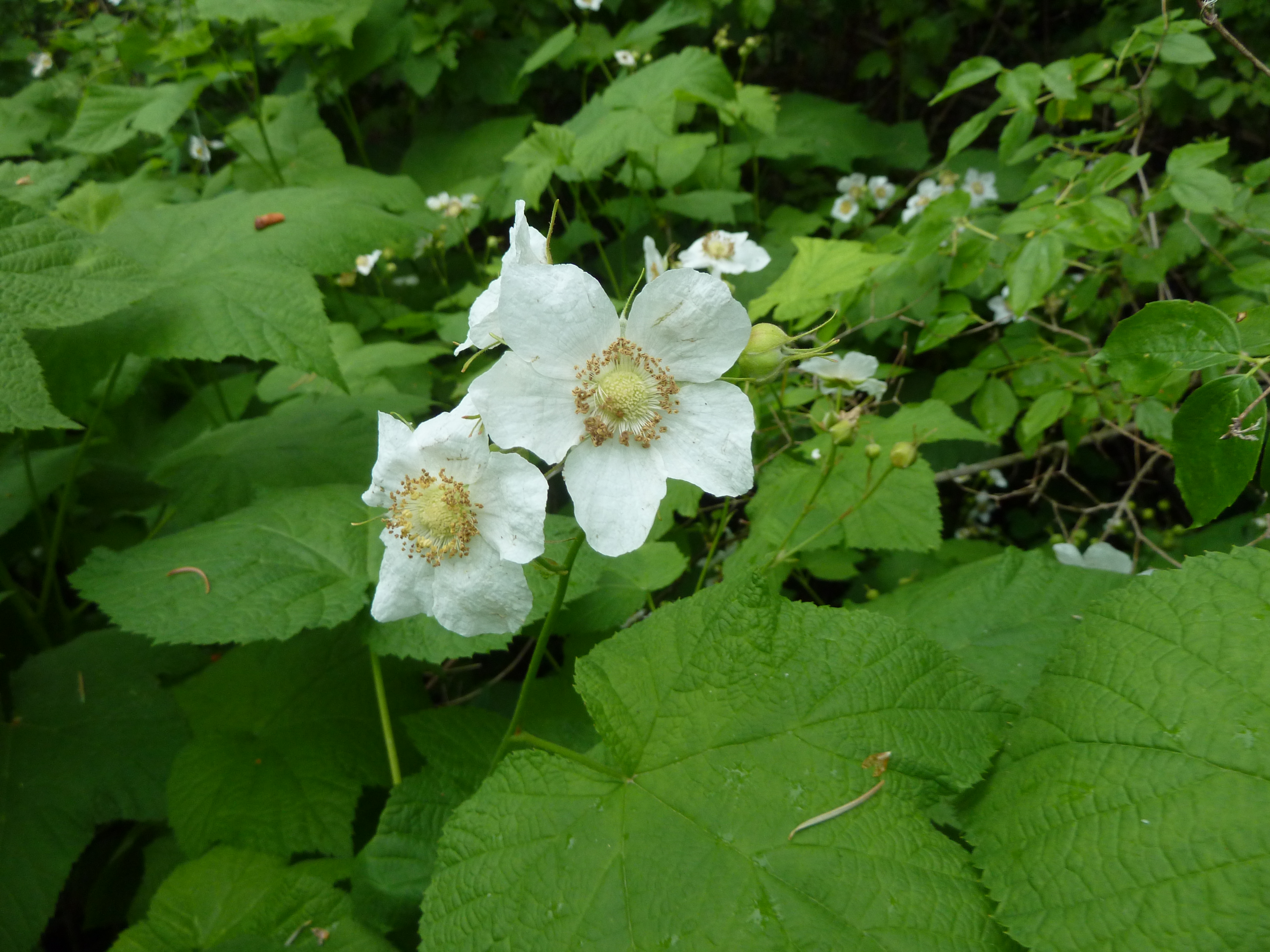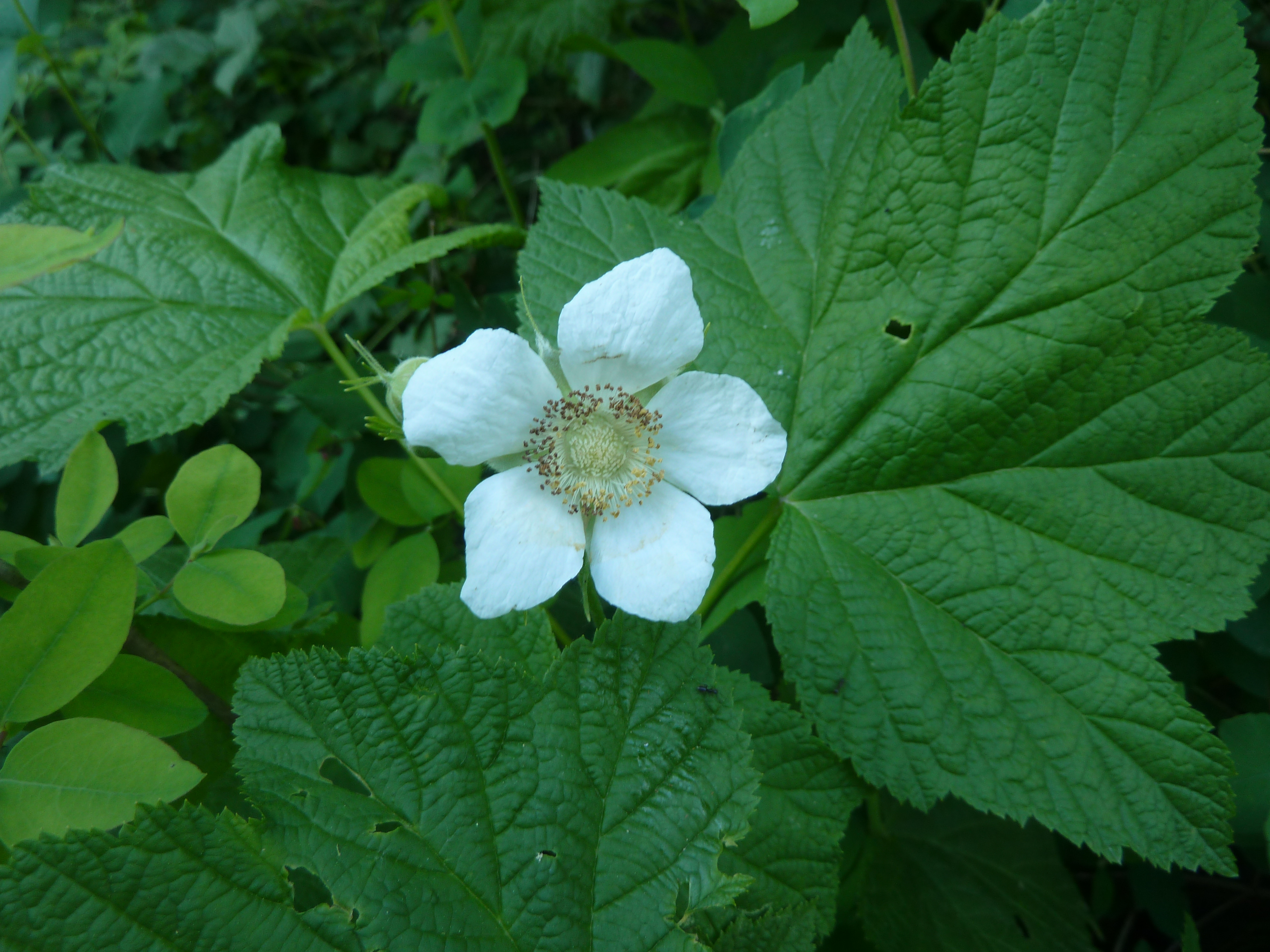

Scientific Name: Rubus parviflorus
Family Name: Rosaceae
Bloom Period: Mid-spring to summer.
Life Span: Biennial
Height: Up to 0.5 – 2 m tall.
Habitat: Widespread and common at low to subalpine elevations in open forest, openings, clearings, roadsides and seepage areas.
Leaf Description: Large, soft, and maple-like shaped. With 3-7 toothed lobes and finely fuzzy on both sides.
Flower and Petal Description: Large, white with 5 broad petals. Crinkled like tissue paper. In long-stemmed clusters of 3-7 flowers at branch tips.
Stem Description: No prickles with gray, shedding bark.
Fruit Description: Shallowly domed, dull, hairy, raspberry-like clusters of scarlet red drupelets.
Medicinal Uses: Fruit is edible with a sweet taste. Young shoots are peeled back and eaten raw by Native Americans.
This flower is native to the area.

